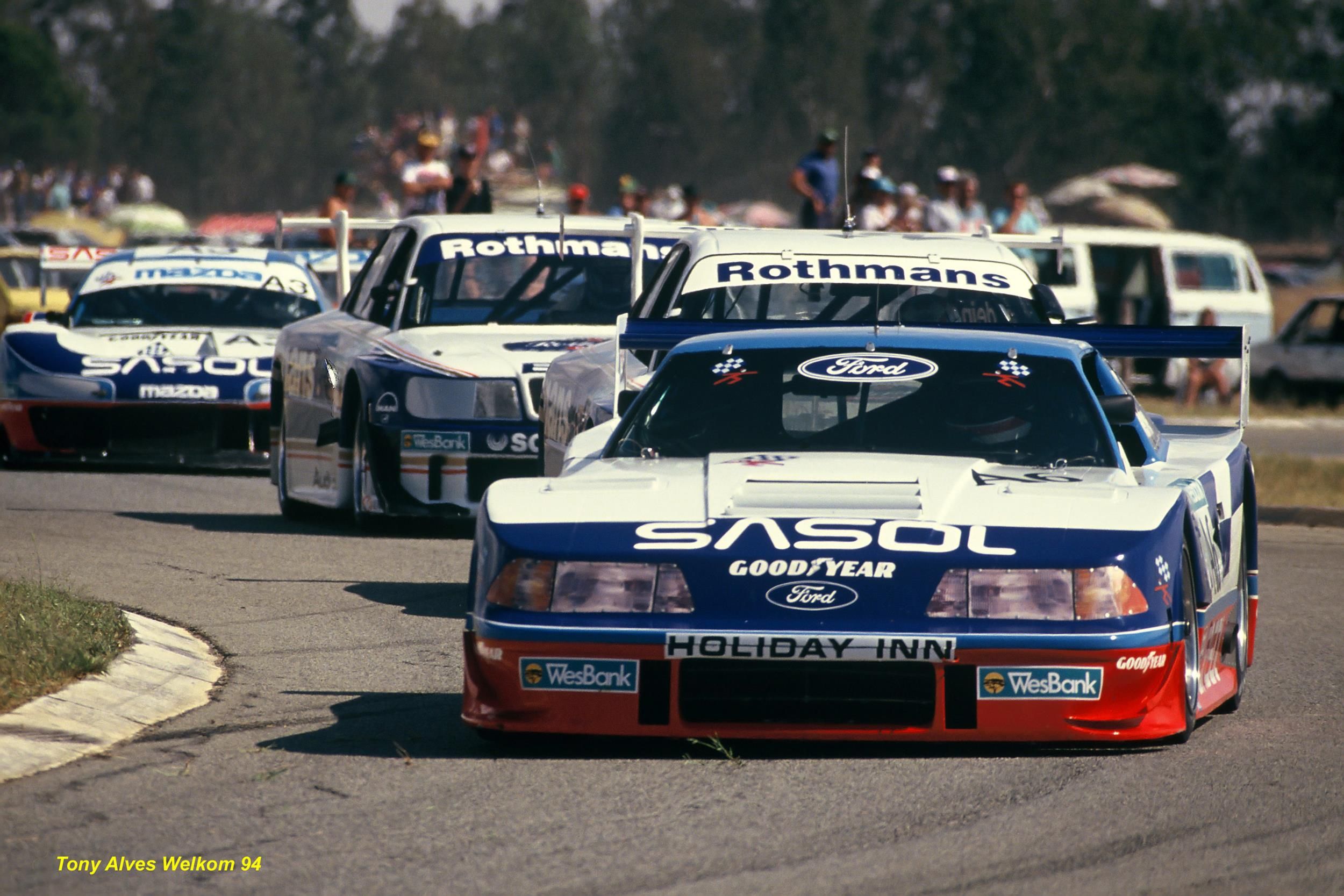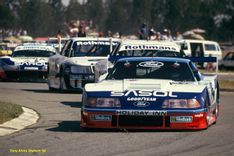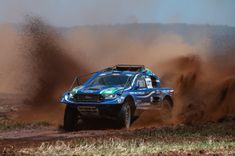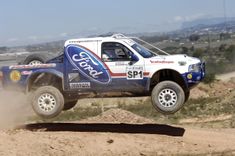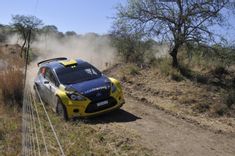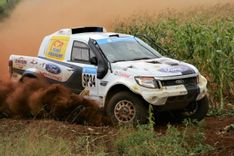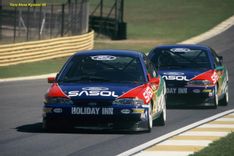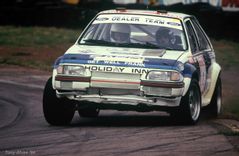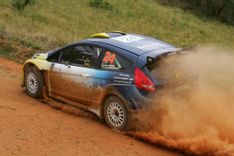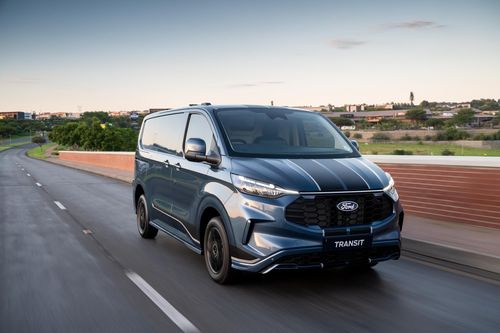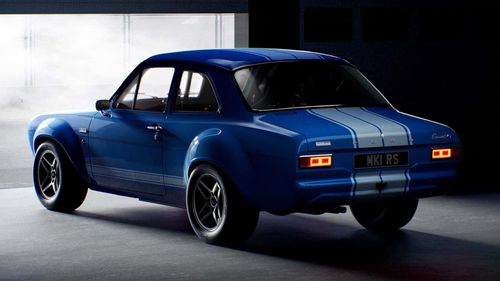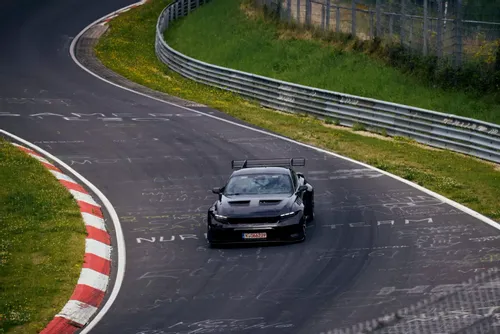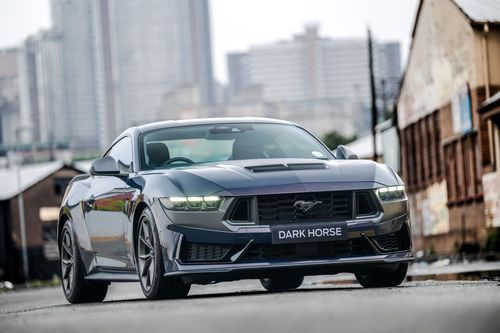Ford's 100-Year Racing Legacy
Pretoria, South Africa, December 6, 2023 – The Ford Motor Company owes its existence to the world of motorsport, as its triumphs in racing events paved the way for the birth of the Ford Motor Company. Not only did the company witness the inception of motorsport, but it also played a pivotal role in its evolution over the past century.
The visionary founder, Henry Ford, once famously stated, "Auto racing began five minutes after the second car was built." He had firsthand experience, as the Ford legacy began when he constructed his first car, the Quadricycle, capable of reaching speeds of 32km/h in 1896. In 1901, Henry Ford participated in a motor racing event, achieving a remarkable upset victory over Alexander Winton, who was then considered America's greatest racer. He continued to partake in speed trials later on.
Henry Ford's success in motorsport attracted investors impressed by his ability to engineer and build lighter, more durable cars than his seasoned competitors. Consequently, the Ford Motor Company was established 120 years ago, in 1903.
Since its inception, Ford has remained dedicated to performance, relentlessly testing its products and technologies against the world's finest. The company boasts an impressive record of 176 Formula One victories, 676 NASCAR wins, 92 World Rally wins, and 330 V8 Supercar wins, in addition to numerous other triumphs and podium finishes at various levels of racing, from grassroots to national and international competitions.
The Early Years:
The growth of local motorsport was gradual until the early 1930s. However, Ford was quick to embrace this emerging scene. When South Africa's first racetrack opened in Kimberley, Ford was there, with Sylvester MacKenzie from Durban competing in his Ford V8 Special. In 1934, MacKenzie and JH Case, driving homebuilt V8 Specials, participated in the country's first international Grand Prix race in East London. Case secured a notable second-place finish, inspiring Jack Whitehead to create his Ford V8 Special. In 1935, Whitehead won the Kimberley 100 at Alexanderfontein, and the following year, he repeated his success with a victory in the Bloemfontein 50 at the Brandkop racetrack.
After World War Two, top-tier motor racing returned to South Africa a decade later. Meanwhile, Ford continued to excel overseas, with Red Byron clinching the inaugural NASCAR race at Daytona Beach and Road Course in 1948 in a flathead V8 Ford.
On the domestic front, saloon car racing gained momentum in the late 1950s, with events like the 1958 Grand Central 9-hour race laying the foundation for national series such as Group 2, Onyx Saloons, Group 5, Modified Saloons, Manufacturer's Challenge, Group 1, Group A, Group N, V8 Saloons, Production Cars, GTC, and various regional championships that followed in the ensuing decades.
Towards the late 1950s, Ford South Africa transitioned from large American saloons like the Galaxie, Fairlane, and Falcon to more agile European models. Privately entered Anglias and Consuls soon became a common sight on local racetracks. One of the most renowned examples was the Broadspeed Anglia, driven by Gordon Briggs.
While the Anglia played a significant role in establishing Ford's presence in local motorsport, it was the Mk1 Lotus Cortina, equipped with the Cosworth-developed Twin Cam engine and driven by legends like Jim Clark, Jackie Stewart, Kosie Swanepoel, and Basil van Rooyen, that solidified Ford's credentials in the world of motorsport.
Halcyon Days:
The 1960s marked a golden era for Ford in racing and a pinnacle for South African motorsport. Locally, tuners enhanced the Kent engine in the Anglia, creating homegrown specials like the GSM Dart, which delivered race-winning performances. Kent engines also powered Formula Ford single-seaters for decades after the series was established in 1967.
Internationally, Ford achieved a remarkable podium sweep in the 1966 24 Hours of Le Mans race. Ford GT40s took the first three places – an iconic moment in Ford's racing history, as company executive chairman Bill Ford described.
Securing four consecutive victories at Le Mans cemented the GT40's status as Ford's racing poster child. Half a century later, the company returned to France to claim a Le Mans class victory, this time with the Ford GT.
South Africa also significantly influenced the GT40's journey to Le Mans success. In November 1965, seven months before the GT40's historic clean sweep at Le Mans, a Ford GT (then known as the still-in-development GT40) driven by Peter Sutcliffe and Innes Ireland nearly won the Kyalami Nine-Hour race, a pivotal event in the South African Springbok Trophy Series. Unfortunately, with less than 10 minutes remaining, the spokes on the left wheel of the Ford started failing, forcing it to slow down and handing victory to a Ferrari, with the GT finishing second.
Interestingly, a GT40 never managed to win an international race at Kyalami, but the Gulf Mirage M1, essentially a development of the GT40, secured victory in the Nine-Hour event twice.
On the local scene, Ford dominated saloon car racing with the Meissner and Superformance-developed Ford Cortinas, driven by Koos Swanepoel and Basil van Rooyen. Swanepoel claimed the inaugural South African Sports Car championship in 1964, ahead of Van Rooyen and Bob Olthoff in a Ford Galaxie.
The Olthoff Galaxie emerged victorious in the 1965 SA Saloon Car Series. In 1966, Swanepoel and Van Rooyen received Ford Mustangs (even though the Mustang was not officially available in South Africa). Van Rooyen triumphed in the championship that year, repeating the feat in 1967.
The Mustangs eventually gave way to Escorts, and in 1969, Peter Gough clinched the Sports Car championship in the Cosworth FVA-powered Meissner-prepared Escort. Another memorable moment was the Zakspeed Mk2 Escort RS's victories in the Wynns 1,000 km races at Kyalami in 1975 and 1977.
However, the iconic Escort is perhaps best remembered for its rally exploits from the late 1960s through to the 1990s, driven by legendary names such as Björn Waldegård, Ari Vatanen, Roger Clark, Carlos Sainz, Didier Auriol, and Marcus Grönholm.
The Escort's rallying legacy shone just as brightly in South African motorsport. Under the guidance of Bernie Marriner, Ford Motorsport, with the Escort Mk2 BDA in the hands of the legendary Sarel van der Merwe and co-pilot Franz Boshoff, proved invincible, securing consecutive championships from 1979 to 1982.
F1 Dominance:
A discussion of Ford's motorsport accomplishments would only be complete with a mention of the iconic Cosworth V8 DFV engine. Developed with Ford's backing, the legendary DFV engine reigned supreme in Formula One for many.
